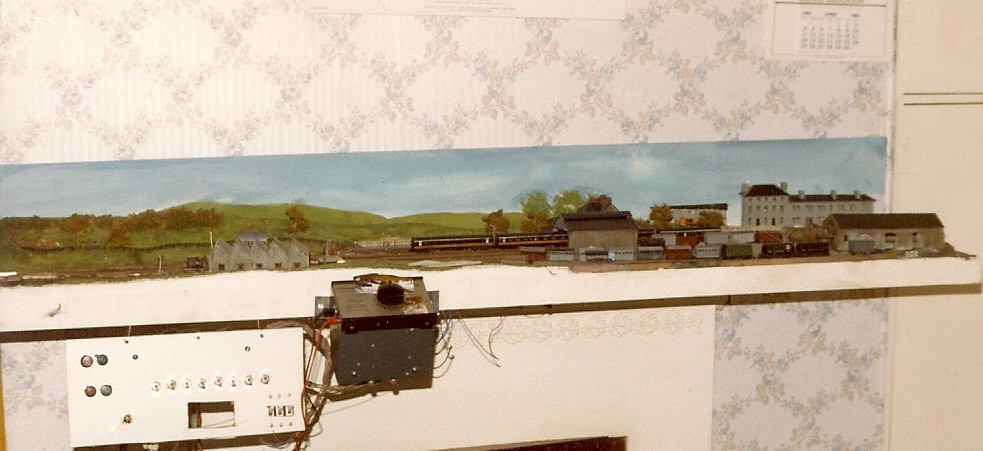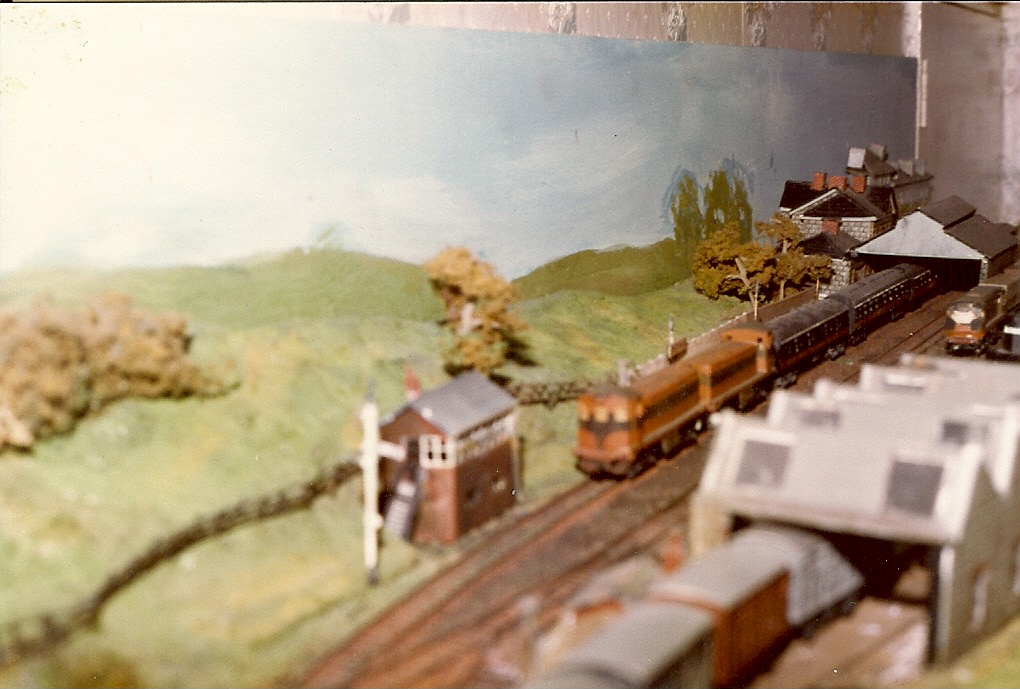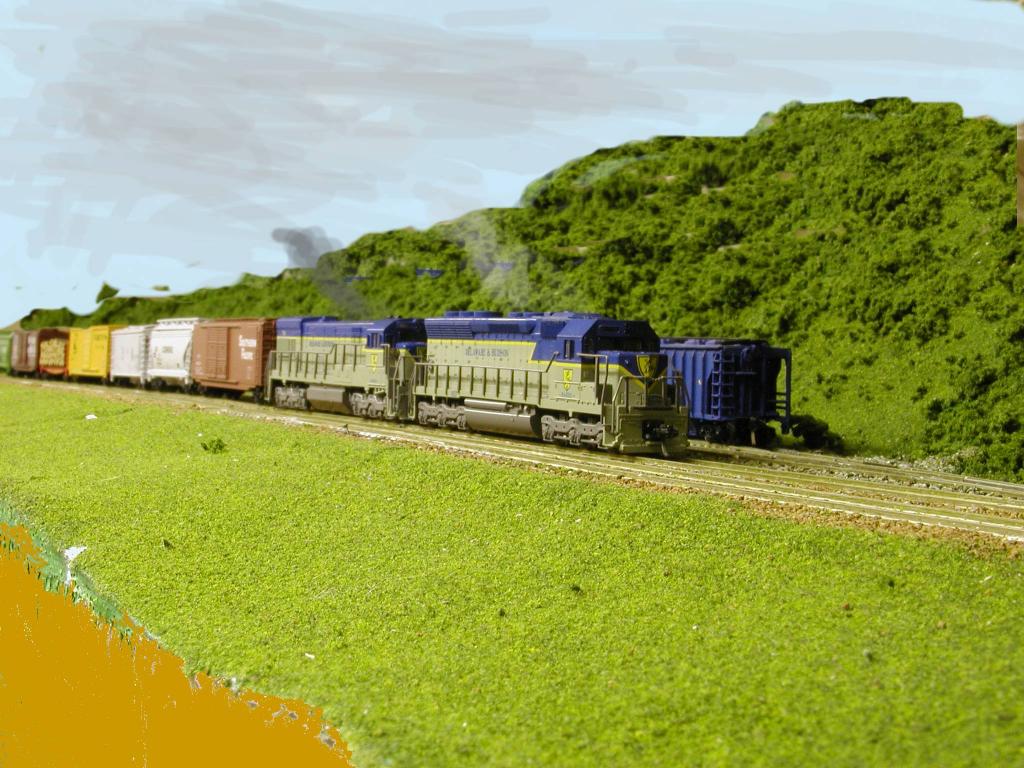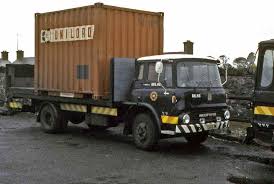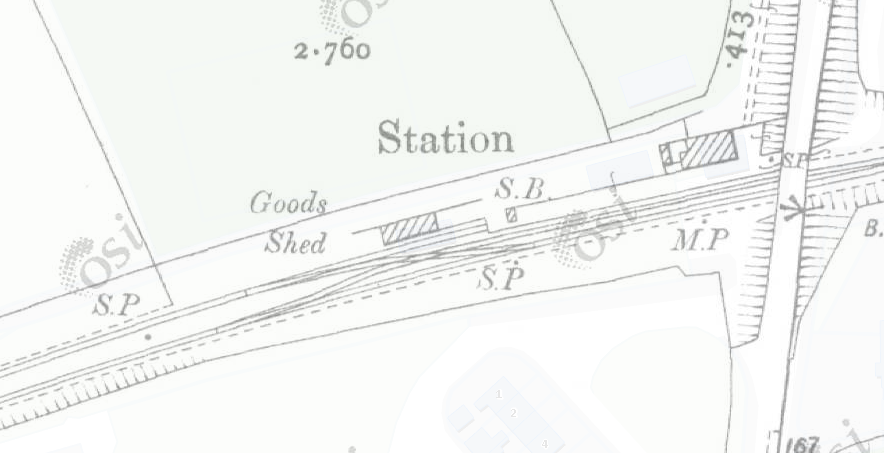-
Posts
4,855 -
Joined
-
Last visited
-
Days Won
119
Content Type
Profiles
Forums
Events
Gallery
Blogs
Store
Community Map
Everything posted by Mayner
-
Worsley Works sides on a rtr Graham Farish or Dapol body would appear to be the best option for producing UTA/GNR coaches Colin Flanagan has produced convincing results with rtr conversions of NCC & GNR coaches using these methods in OO The Worsley Works N scale list does not include GNR stock at this stage http://www.worsleyworks.co.uk/2mm/2mm_Irish_Standard_Gauge.htm but Alan Doherty is likely to produce the sides if you ask him. Finding a donor body may be a bit tricky Graham Farish appear to have dropped their older corridor and non-corridor coaches which may still be available second jhand on e-bay or exhibitions https://www.ebay.co.uk/itm/GRAHAM-FARISH-N-GAUGE-MAINLINE-COMPOSITE-COACH-GWR-BROWN-CREAM-/292327768203 j
-
The tube seems to have been a common feature on the drivers side of MGWR locos, possibly as a holder for the section staff on single lines. John
- 45 replies
-
- gsr class 551
- j26
-
(and 1 more)
Tagged with:
-
Nice to see a good step by step guide in chassis assembly, the Leinster Models kits were just a step removed from scratchbuilding. Its good to see that you milled out the chassis to the correct profile, the lightning holes in the frames are such a distinctive feature of the smaller MGWR locos. Traditional method was to solder the two frame blanks together and cut the frames to shape using a Piercing Saw and needle files.
- 45 replies
-
- 1
-

-
- gsr class 551
- j26
-
(and 1 more)
Tagged with:
-
Its sounds like a good idea American modelers (Worldwide) and other "special interest" groups tend to stay in touch through conventions (hiring a hall and layout tours) rather than attending exhibitions. There seems to be enough good layouts and modelling interest to support IRN Conventions in the Ulster, Leinster & Cork. Conventions are aimed at the modeler rather than the general public and usually include trade stands, workshops,, layout tours and visits to preserved lines/railway workshops.
-
The 52 Class were the 1st GSWR Class of 4-4-0 for express passenger traffic, the locos were bumped from the Kingsbridge-Cork & the Killarney passenger workings by the slightly larger 60 Class in the late 1880s, but lasted in main line and branch services into the 1950s. including Kingsbridge-Carlow-Kilkenny and Limerick-Sligo services & branch line services. I am planning to build two of these locos one for my own uses and a commission and as a change from the 101 Class. I have 5 SSM/TMD J15s at various states from un-built to complete and a rebuild/upgrade into a 52 Class looked like the best option for 191 the oldest member of my fleet started over 30 years ago in 1986. I am looking at designing a set of etched brass scratchbuilders parts for these locos as an alternative to a scratchbuild. The basic idea is to use the parts in conjunction with the SSM GSWR 101 Class tender & castings to complete the locos. The parts would allow for option of building the elegant GSWR/early GSR version with raised round top firebox and waisted smokebox or the more plain Jane GSR/CIE version with flush round top firebox and straight sided smokebox.
-
Nice touch with the grass growing siding, with shrubs and bushes at the stop blocks. The CVR seems to have been a spit & polish operation with well turned out locos & stock and well kept stations right up to closure in 1941. With Sir Basil Brooke (NI Prime Minister) and Henry Forbes on the Committee of management they would have run a pretty tight ship
-
I am not convinced that its easier to kitbash a plastic coach into something its not than to assemble a kit or even build a model from scratch. The LMS full brake is considerably shorter than the GSR/CIE full brakes. Apparently the UTA had ex LMS coaches and full brakes, maybe a rake of UTA stock in dark green behind a WT to ring the changes The SSM Bredin Brake with its bolt together construction is probably an easier and faster option for the CIE Luggage vans, Bachmann Commonwealth bogies would speed up assembly in OO. Similarly I would use the Bill Bedford sides with Comet, MK1 parts in preference to trying to modify a Hornby or Bachmann Mk1 into a BR Van. Then again its a case of each to personal preferences and aptitude with different techniques and materials
-
There are photos of both 233 & 234 in the Supertrain livery inside Inchacore Diesel No 1 on 10 July 1976 in Barry Carse's Irish Metrovicks book. There is also a 1969 colour photo of B233 departing Connolly in multiple with B192 with the Sunday 10:00 Dublin-Limerick via Nenagh passenger. B233 looks very smart in black with small yellow warning panel and white cheverons above the cab windows. The main visual difference between the Maybach engined locos and the original C Class was the blanked out porthole on one side at the RHS at the No2 end and the larger radiators. 233 & 234 did not receive GM pattern headlamps until re-built with EMD 645 power units during the late 1970s. The locos seem to have been used on Dublin-Limerick passenger workings and bagged & bulk cement from Castle Munget
-
The Executive Coaches were regularly used by Guinness for entertaining clients from the bar trade, (tours to James Gate & Dundalk breweries, Galway Races etc. The Executive train was exhibited at the Inchacore 150 in 1996 but was required for a charter on the Saturday afternoon.
-
Try North West Shortline in the United States. http://www.nwsl.com/home.html They manufacture replacement wheels for Athearn and other American manufacturers. http://nebula.wsimg.com/8e0447237058b48781159b49163fee67?AccessKeyId=08BEE66B97B387F20C0D&disposition=0&alloworigin=1
- 1 reply
-
- 1
-

-
The Atlas RSD 4 /5 might be a better option than the Class 31 for motorising an A Class. Atlas locos have a very good reputation in terms reliability and slow running quality, the RSD 4-5 had similar trucks with an un-equal wheelbase to the A Class, Being to a smaller scale 1:160 compared with the British 1:148 it should be easier fit the Atlas chassis in the Shapeways A Class body.
-
I have modeled in N scale for nearly 40 years and seem to have had more success in completing layouts in N then in the larger scales. I initially started in N out of frustration with trying to squeeze a OO gauge layout into an 8X6 box room, together with problems with less than satisfactory running with contemporary OO gauge locos and my beginners efforts at scratch/kitbashing Irish locos and rolling stock. Adapting N allowed me to concentrate on modelling the railway with nice sweeping curves and without too much compression of station layouts, eventually building an end to end layout with a terminus and a small junction station in an 11X11 bedroom with an operating sequence based on the Mayo Line during the transition from loose coupled to liner working. I was able to run 5-6 coach passenger trains double headed by B121 Diesels, a Night Mail and a 001 hauled goods loading to 15 wagons. BR also had running powers with a Minitrix Britannia, a Peco Jubilee & a Farish Black 5 and a rake of blood and custard coaches. I eventually getting round to modifying Atlas & Arnold diesels to look like CIE locos and modifying freight rolling stock, the running quality of Arnold, Atlas and Minitrix locos were far superior to contemporary OO gauge. The terminus was on a 7' long baseboard and would have taken a space of 14' in OO, minimum radius curves were 18" which looks reasonable in N The N gauge was dismantled following a house move I later started modeling in American N Scale to get something running quickly after moving to the UK in the late 80s though I did not get round to building a layout until I returned to Ireland nearly 10 years later, though I did improve my skill in assembling brass and whitemetal kits Atlas, Kato and Proto 2000 locos are extremely smooth running with twin flywheel drive and good slow running characteristics. I understand that the Valve Design Bo Bo & 071/101 bodies are designed to fit on Proto 2000 chassis True to form the American layout was dismantled & re-erected after I moved to New Zealand before being dismantled and put into storage following a house move 10 years ago. The trains are on a yard built on 2X4' X 1' wide modules track is Peco Code 55
-
Strictly speaking hauled stock such as the Cravens could not be used for push pull operation with the B201 Class and the 6100 Class push pull driving cars. Any form of hauled stock would have been a great improvement on the converted railcars which lost their comfortable seating and tended to roll at speed when converted to push pull operation. The Push-Pull sets were converted from AEC railcars and Powered Intermediates usually marshaled in 5 car sets, I think an AAR control system was used similar to the General Motors locos. 121 Class locos worked the Greystones Shuttles after the B201s were withdrawn from main line service until replaced by leased NIR 80 Class set I always thought CIE missed an opportunity in failing to set up the B201s for top and tail operation with the MK2D Supertrains creating an Irish Midi-HST. The B201s were capable of fast running and like the 001s with Commonwealth bogies rode steadier and were easier on the track at high speed than the pure bread GM locos These would have been ideal for speeding up the Heuston-Limerick via(Nenagh) and Heuston Waterford trains. Hint Hint Noel
-
Sundries containers and bagged cement traffic was unloaded on the main line using forklifts at some of the smaller depots, such as Mullingar, Boyle & Roscommon on the Midland. Bagged cement was also unloaded on the main line at Gort & Tuam on the Limerick-Claremorris line. To be fair CIE engineers were fairly innovative in designing wagons like the bagged and bubble cement and prototype sundries van. In some respects the design of the sliding door sundries van was ahead of current technology and the 10' Uniload Container a better work around for sundries traffic than a pallet wagon. In the end there was no way IE could continue to transport sundries and domestic container traffic with a government subsidy once the road transport industry was de-regulated and CIE lost its virtual monopoly on road haulage in the early 1990s. Interestingly railborne "sundries" traffic is making a come back with Logistics companies using rail for its line haul work between hubs. The big difference is the much longer line haul between terminals and higher volumes of traffic.
-

where can I visit and photo a real bullied single sided beet wagon
Mayner replied to Junctionmad's question in Questions & Answers
The black running gear looks even better . It might calm down once the paint starts to fade, Some friends had "BR Bauxite" specially formulated for a narrow gauge brake van in the UK. The van eventually faded from a salmon pink when freshly painted to a much darker shade -
The side door containers seem to have been used as a more modern substitute for H vans rather than for intermodal work before loose coupled goods trains were phased out in the late 70s I remember seeing side door containers and half heights in traffic use in the down goods yard in Athy around 78, there are a number of photos of side door containers in the Youghal goods train.
-
An alternative is to use Marcway copper clad pointwork in combination with their SMP plastic sleepered flexible track. http://www.marcway.net/point.php. Marcway will also produce custom pointwork and complex formations in addition to their standard range of points and crossings. This might have an advantage over using standard points with the curved track formations in Omagh Goods yard, David Holman used custom built Marcway points and trackwork for his Arigna Town broad gauge O Scale layout. One of the advantages of thin sleepered systems like Marcway/SMP is that its a lot simpler to ballast the track than with Peco or other systems with thuck sleepers. Basically lay the track on a thin layer of PVA or School Glue applied to the track underlay and simply sprinkle the ballast on top and vacuum off the surplus after 15-20 minutes.
-
Hi Tony Personally I would not fit polythene as a vapor barrier between the framing and Stirling Board as its likely to trap air moisture breath and environmental) inside your shed and potentially increase rather than decrease the risk of molds and damp inside your shed. In recent years building design has shifted away from vapor barriers towards building wraps such as Du-Pont Tyvek or bitumen based "building paper" that allow airborne moisture to enter and leave a building following problems with leaky homes in North America and New Zealand. The Stirling Board and roofing felt will serve a similar function to a building wrap. I would strongly recommend insulating the ceiling and laying polythene on the ground underneath the floor. The polythene will prevent moisture from beneath the floor approx 3ltr a day for a 9Sqm shed https://www.standards.govt.nz/touchstone/building/2014/jul/preventing-dampness-under-suspended-floors/ I live in a 1920s renovated bungalow of timber frame with weatherboard wall cladding and a corrugated iron roof similar to your shed, with similar range of temperature and humidity to the West of Ireland. Although our walls are not insulated and no vapor barriers/building wraps used, mold and damp is not an issue 1. the important thing is to ensure adequate ventilation at eaves level by leaving a gap between the top of the insulation and the underside of the roofing felt at eaves level. 2. Ensuring that the temperature inside the shed does not fall below dew point. I have an electric radiator with the thermostat set at the minimal setting in my garden shed/workshop which is of similar construction, and have had no problems with moisture damage to tools rolling stock or electronic equipment Gyproc Thermaline http://www.british-gypsum.com/products/gyproc-thermaline-pir?tab0=0 or a similar insulated plasterboard is probably the simplest and most economic way of insulating the ceiling in your shed.
-
Leslie: Hope you follow this up with a model of the ubiquitous 10' Uniload container that were used to carry the bulk of sundries traffic between the late 70s & early 1990s. Most sundries traffic was carried carried in these wagons with door to door delivery by Bedford TK fitted with taillift. Sundries high value goods like cigarettes, spirits, motor parts were packed into caged trollies at the factory or railhead then placed inside the 10' containers,
-
In a way space is less of a problem in modelling an old style goods yard than a passenger station, with minimalist scenery and no station platforms you can fill most of the baseboard with track. Canada Road http://www.emgauge70s.co.uk/layout_alloa.html is an inspiration for what can be achieved in a small space.
-
Hi Kevin JM Design and railway modelling has had to take a back seat for most of 2017 due to family and other work commitments, at this stage I am unlikely to be able to fill orders for coach sides or release further kits before Jan 2018. If all goes well I may have more time in 2018 and possibly manage a visit to Ireland/
-
The operational & signalling side of the County Down was placed under GNR "supervision" following the Ballymacarrett Collision in 1945 when a Hollywood-Belfast push pull train ran into the back of a stationary Bangor-Belfast train as a result of which 22 people died and 27 were injured https://en.wikipedia.org/wiki/Ballymacarrett_rail_crash. Steam push pull workings were abolished and GNR double ended Atkinson Walker railcars operated the shuttles following the accident. The collision may have been one of the main catalysts for setting up the UTA as the collision had effectively bankcupted the County Down
-
Building the layout in OO opens up the option of using modified British RTR locos rather than scratch or kit building GNR prototypes. In the past the GMR/Airfix 4F modified with a round top firebox and canopy cab was used as a basis for the SG Class 0-6-0. Both Hornby & Bachmann produce a 4F, the Hornby loco is based on the 30 year old Airfix tooling complete with tender drive, while the Bachmann loco is more recent with the motor in the loco. http://www.hattons.co.uk/52563/Bachmann_Branchline_31_882_Class_4F_0_6_0_43924_BR_black_with_late_crest_and_Fowler_tender_as_preserved_/StockDetail.aspx Likewise it might the Hornby T9 with a new cab & 6 wheel tender could be used as a basis for an S Class. Allow a year and a budget of £250 per loco if you decide to build from scratch or assemble a loco from a kit. Worsley Works produce scratchbuilder parts for the GNR U & UG locos and underframes sides and ends for AEC & BUT railcars and a number of different coach types. SSM produce kits for the AL 0-6-0, PPs 4-4-0, S & SG Class, K15 & L12 coaches & the 30T goods brake
-
The driver who was trapped in last years quake drivesthe 1st Southbound revenue earning freight from Picton into Christchurch since the quake ehttp://www.nzherald.co.nz/nz/news/article.cfm?c_id=1&objectid=11922829. The first through Northbound freight ran through yesterday with traffic for the North Island and wagons for repair in Hutt Works outside Wellington. Engineer Sullivan's train started its journey departing Westfield Yard Auckland on Wednesday evening with traffic for Bascik, Toll Group, Mainfreight, Owens Transport, Daily Freight and Maersk bound for Wellington & the Cook Straight Train Ferry & the MLN to Christchurch.
-
Going off topic both Ferbane and Belmont & Cloghran on the Banagher branch had track layouts with the goods yard served by a crossover off the goods loop and a diamond crossing across the running line up to closure in 1963. Presumably this saved a facing point lock and made shunting quite interesting. Smaller stations on the North Kerry & Limerick-Sligo line tended to have a similar track layout without the complication of the diamond crossing, this would have simplified attaching and detaching tail traffic to passenger and mixed trains.
.png.c363cdf5c3fb7955cd92a55eb6dbbae0.png)

